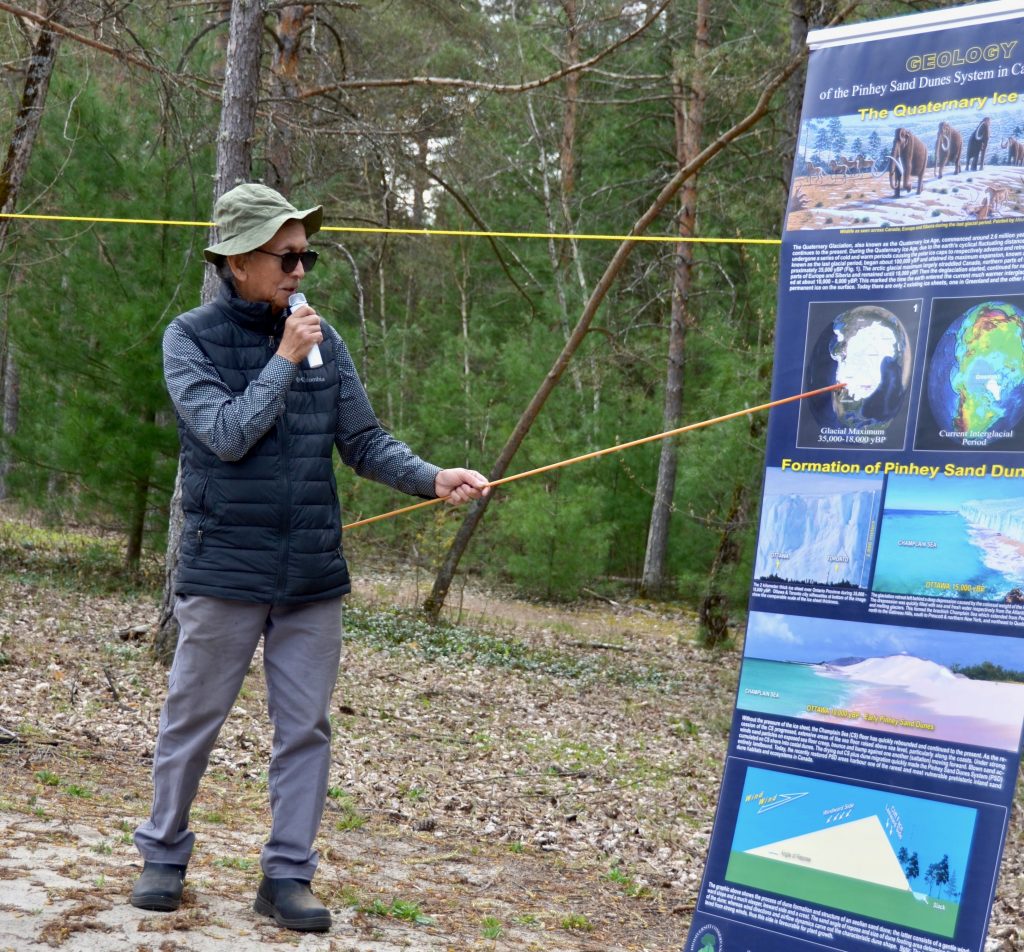In this newsletter, you can read about:
- BCI at Pollinator Appreciation Day
- Beginning of our shed mural project
- An interview with Pinhey Sand Dunes founder, Dr. Pete Dang
BCI at Pollinator Appreciation Day
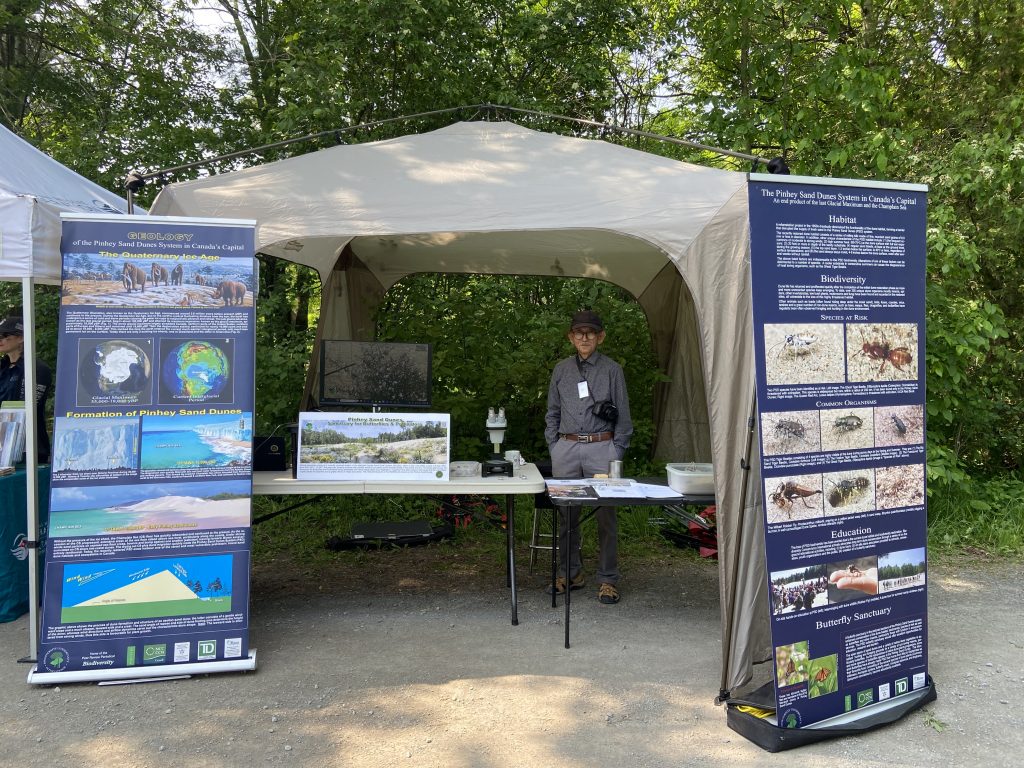
Article and photos by Diana Todd
On Saturday June 7th 2025, Biodiversity Conservancy International (BCI) joined a variety of experts at Fletcher Wildlife Garden to celebrate Pollinator Appreciation Day. BCI President, Dr. P.T. Dang, introduced attendees to the spectacular biodiversity found at Ottawa’s Pinhey Sand Dunes, especially at the site’s sanctuary for butterflies.
Pollinators, including butterflies, are invaluable creatures that most flowering plants rely on for reproduction. Unfortunately, pollinators are not often given enough credit as threats such as habitat loss and pesticide use reduce their populations. While native wildflower density has decreased across Canada, pollinator advocates are working to create new habitat and to encourage landowners to plant their own pollinator gardens.
Pollinator Appreciation Day’s theme this year was “Every Bit Matters” — a familiar concept at the Pinhey Sand Dunes. Since 2012, the combined effort of hundreds of volunteers has accomplished a lot at the dunes. The site’s unique history is one of decimation and recovery; a vast sandy landscape had been reduced to a mere 1% of its original size, but was restored by those who recognized its ecological value. The restoration process has been tedious but there is value in every weed pulled and grain of sand sifted.
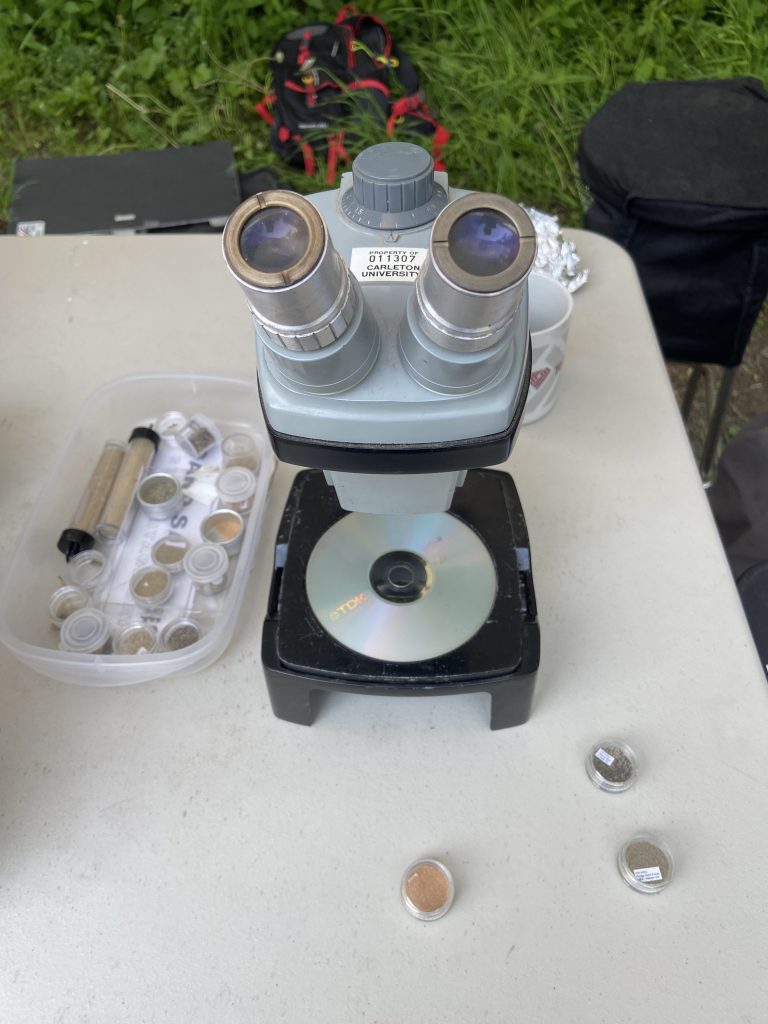
If you’re interested in contributing even just “a bit” of your time to the restoration efforts at the dunes, please do not hesitate to reach out to us. Every bit matters.
Art work kicks off for shed mural project
Article and photos by Karen Lane
In late June, enthusiastic volunteer artists started crucial design work for our planned murals. The murals will adorn the doors and one side of the shipping container shed at the Pinhey Sand Dunes, site 2.
The goal is to depict key insects and plants found at the dunes to help visitors spot them as they walk around, and to help distinguish our unique ecosystem from the surrounding Pinhey Forest. The paintings will also brighten the utilitarian storage container. The shed doors will feature a set of large butterfly wings where people can pose for photos as a butterfly, to post on social media and raise awareness of the site.
The team – led by Aaron Batten – hopes to be finished this autumn, but much depends on whether and when funding for this $1,000-plus project comes though. Biodiversity Conservancy International and Friends of Pinhey Sand Dunes are working hard to make it happen.
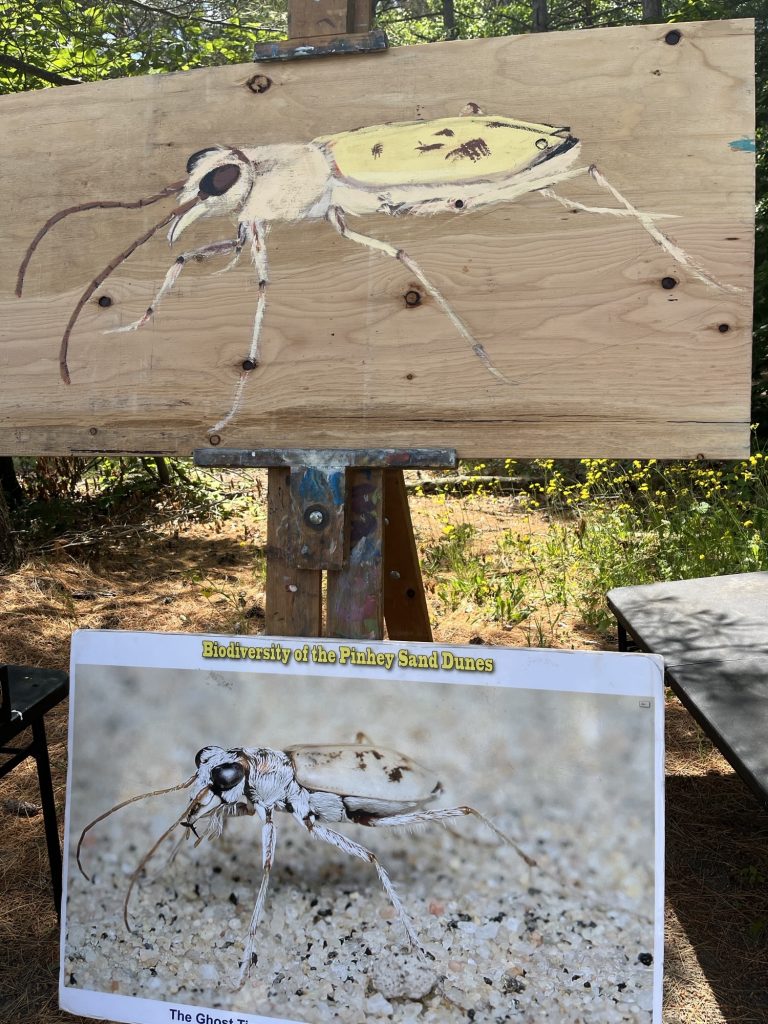
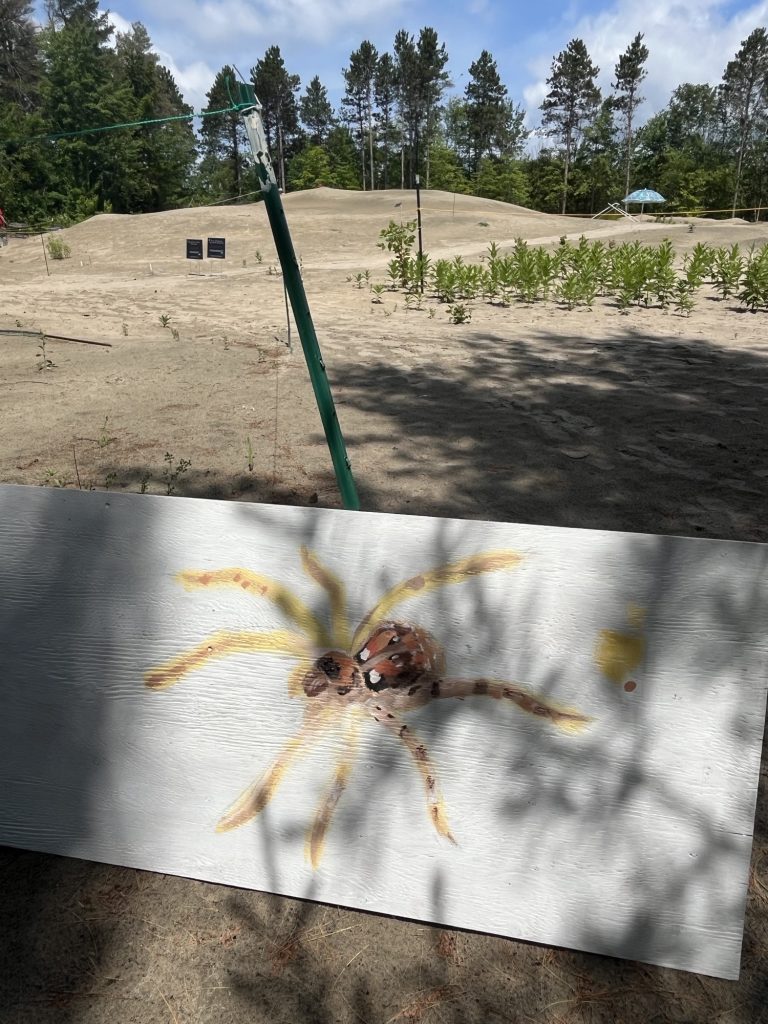
The people of Pinhey Sand Dunes: Dr. Pete Dang
By Karen Lane
Meet Pete Dang — entomologist, educator, but above all a parent to the reborn Pinhey Sand Dunes. Pete has an impressive résumé, and brings considerable expertise to the project:
- President and Founder of Biodiversity Conservancy International
- Director, Pinhey Sand Dunes restoration project
- Founder of the internationally renowned quarterly scientific journal Biodiversity
- Research Scientist (Entomologist), specializing in Microlepidoptera specifically leafrollers, budworms and budmoths, mosquitoes and other biting flies, and ladybird beetles
- Former scientific staff of the Canadian Forest Service, Natural Resources Canada and Agriculture and Agri-Food Canada (AAFC)
- Former scientific staff of the Canadian Forest Service, Natural Resources Canada and Agriculture and Agri-Food Canada (AAFC)
Born in Vietnam and armed with a doctorate from Michigan State University, Pete came to Canada in 1972 to work as a scientist and curator for the Canadian National Collection of Insects at the Experimental Farm.
But Pete wanted to do more. “Insects make up 75% of all living organisms,” he says, “Without insects, we cannot survive. They provide everything — they clean the environment, pollinate flowers, provide crucial ecosystem services, food, et cetera.”
So, in 2011, Pete and others approached the National Capital Commission (NCC) to start rehabilitating a small sandy area, known at that time as the sandpit. He had done some research in this area, and knew it was a special ecological site. The NCC readily agreed to support the project.
After three months, the 1-hectate “sandpit” already looked different. And it has grown to the three separate dune sites (plus the hydro corridor), now known as the Pinhey Sand Dunes that we see today. Pete has bigger ambitions though. He wants to see a fully restored and biodiverse ecosystem, with all three dune sites connected, perhaps with a boardwalk, but also an expanded sanctuary for butterflies – his main love – and an interpretation center, so that the nearby community and others can learn and benefit from the value of the Pinhey Sand Dunes.
Pete is at the Pinhey Sand Dunes most Sunday mornings, from May to October, directing rehabilitation work. He also spends time throughout the week teaching school students, and working with university students. Come and say hello.
Pete Dang is President of the Biodiversity Conservancy International and director of the Pinhey Sands Dune Restoration and Conservation project.
